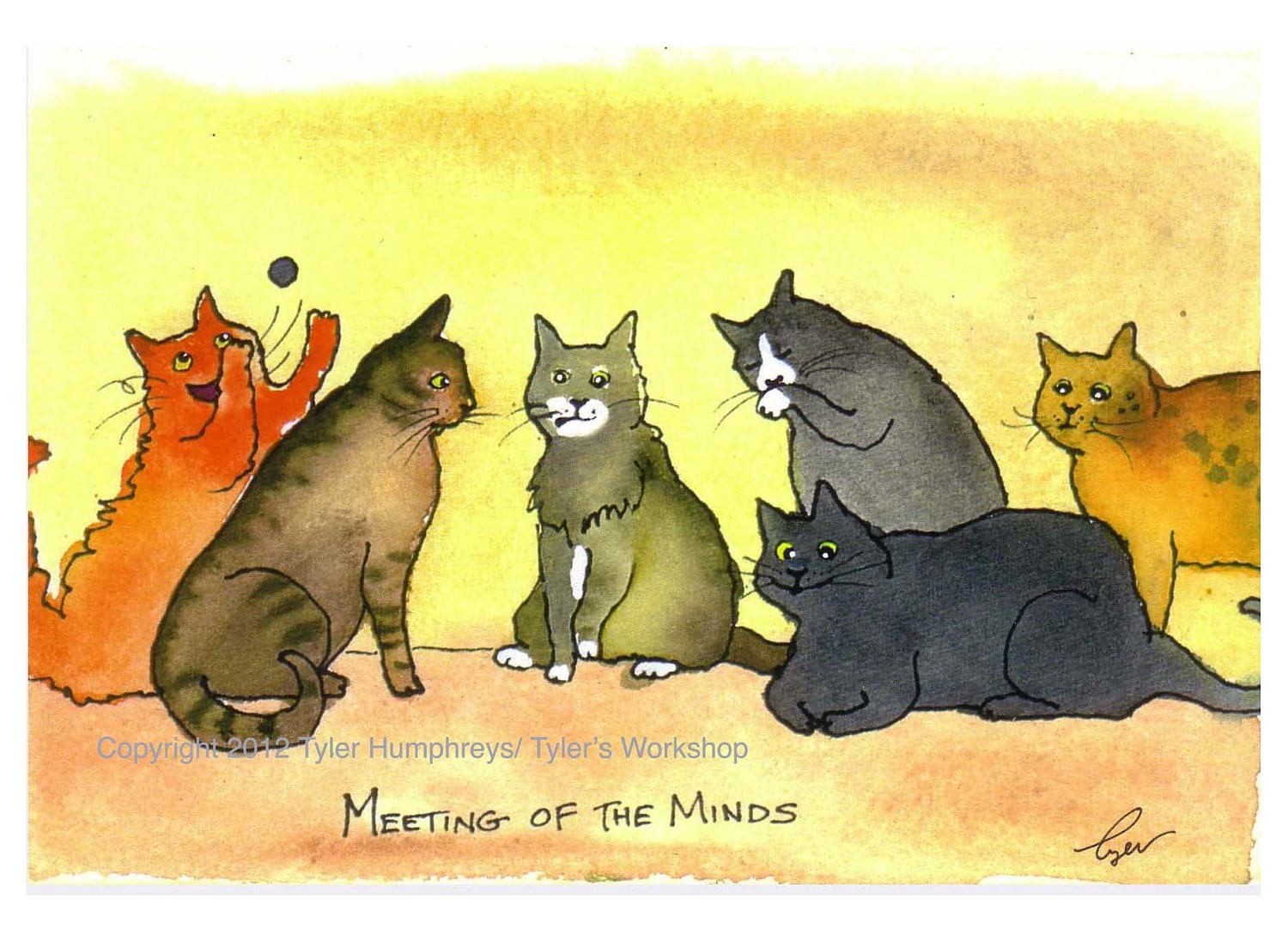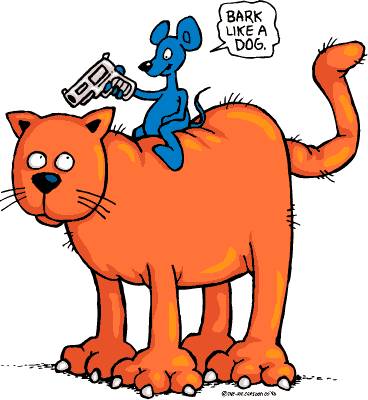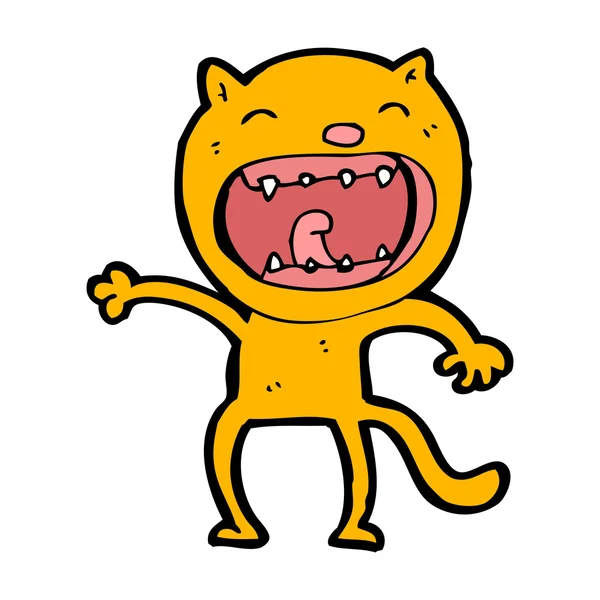Funny Cat Cartoon
Source:- Google.com.pkFelix the Cat is a funny animal cartoon character created in the silent film era. The anthropomorphic black cat with his black body, white eyes, and giant grin, coupled with the surrealism of the situations in which his cartoons place him, combine to make Felix one of the most recognized cartoon characters in film history. Felix was the first character from animation to attain a level of popularity sufficient to draw movie audiences.[1][2]
Felix's origins remain disputed. Australian cartoonist/film entrepreneur Pat Sullivan, owner of the Felix character, claimed during his lifetime to be its creator. American animator Otto Messmer, Sullivan's lead animator, has been credited as such.[3] What is certain is that Felix emerged from Sullivan's studio, and cartoons featuring the character enjoyed success and popularity in 1920s popular culture. Aside from the animated shorts, Felix starred in a comic strip (drawn by Sullivan, Messmer and later Joe Oliolo) beginning in 1923,[4] and his image soon adorned merchandise such as ceramics, toys and postcards. Several manufacturers made stuffed Felix toys. Jazz bands such as Paul Whiteman's played songs about him (1923's "Felix Kept On Walking" and others).
By the late 1920s with the arrival of sound cartoons Felix's success was fading. The new Disney shorts of Mickey Mouse made the silent offerings of Sullivan and Messmer, who were then unwilling to move to sound production, seem outdated. In 1929, Sullivan decided to make the transition and began distributing Felix sound cartoons through Copley Pictures. The sound Felix shorts proved to be a failure and the operation ended in 1932. Sullivan died in 1933. Felix saw a brief three cartoon resurrection in 1936 by the Van Beuren Studios.
Felix cartoons began airing on American TV in 1953. Joe Oriolo introduced a redesigned, "long-legged" Felix, added new characters, and gave Felix a "Magic Bag of Tricks" that could assume an infinite variety of shapes at Felix's behest. The cat has since starred in other television programs and in two feature films. As of the 2010s, Felix is featured on a variety of merchandise from clothing to toys. Oriolo's son, Don Oriolo, later assumed creative control of Felix.
In 2002, TV Guide ranked Felix the Cat number 28 on its "50 Greatest Cartoon Characters of All Time" list.
On 9 November 1919, Master Tom, a prototype of Felix, debuted in a Paramount Pictures short entitled Feline Follies.[6] Produced by the New York City-based animation studio owned by Pat Sullivan, the cartoon was directed by cartoonist and animator Otto Messmer. It was a success, and the Sullivan studio quickly set to work on producing another film featuring Master Tom, the Felix the Cat prototype in The Musical Mews (released 16 November 1919). It too proved to be successful with audiences. Otto Messmer gave two different versions of how Felix got his name, the one on his official site ”Rejoining Sullivan with a great idea for a new character named Felix the Cat,[7] and the second that ”Mr. (John) King of Paramount Magazine suggested the name "Felix", after the Latin words felis (cat) and felix (lucky), which was used for the third film, The Adventures of Felix (released on 14 December 1919). Pat Sullivan said he named Felix after Australia Felix from Australian history and literature. In 1924, animator Bill Nolan redesigned the fledgling feline, making him both rounder and cuter. Felix's new looks, coupled with Messmer's character animation, brought Felix to fame.[8]
The question of who created Felix remains a matter of dispute. Sullivan stated in numerous newspaper interviews that he created Felix and did the key drawings for the character. On a visit to Australia in 1925, Sullivan told The Argus newspaper that "The idea was given to me by the sight of a cat which my wife brought to the studio one day."[9] On other occasions, he claimed that Felix had been inspired by Rudyard Kipling's "The Cat that Walked by Himself" or by his wife's love for strays.[8] Members of the Australian Cartoonist Association have demonstrated that lettering used in Feline Follies matches Sullivan's handwriting.[10] Pat Sullivan also lettered within his drawings which was a major contradiction to Messmer's claims.[10] Sullivan's claim is also supported by his 18 March 1917, release of a cartoon short entitled The Tail of Thomas Kat, more than two years prior to Feline Follies. Both an Australian ABC-TV documentary screened in 2004[11] and the curators of an exhibition at the State Library of New South Wales, in 2005, suggested that Thomas Kat was a prototype or precursor of Felix. However, few details of Thomas have survived. His fur color has not been definitively established, and the surviving copyright synopsis[citation needed] for the short suggests significant differences between Thomas and the later Felix. For example, whereas the later Felix magically transforms his tail into tools and other objects, Thomas is a non-anthropomorphized cat who loses his tail in a fight with a rooster, never to recover it.
Sullivan was the studio proprietor and—as is the case with almost all film entrepreneurs—he owned the copyright to any creative work by his employees. In common with many animators at the time, Messmer was not credited. After Sullivan's death in 1933, his estate in Australia took ownership of the character.
It was not until many years after Sullivan's death that Sullivan staffers such as Hal Walker, Al Eugster, and Sullivan's lawyer, Harry Kopp, credited Messmer with Felix's creation. They claimed that Felix was based on an animated Charlie Chaplin that Messmer had animated for Sullivan's studio earlier on. The down-and-out personality and movements of the cat in Feline Follies reflect key attributes of Chaplin's, and, although blockier than the later Felix, the familiar black body is already there (Messmer found solid shapes easier to animate). Messmer himself recalled his version of the cat's creation in an interview with animation historian John Canemaker:
Sullivan's studio was very busy, and Paramount, they were falling behind their schedule and they needed one extra to fill in. And Sullivan, being very busy, said, "If you want to do it on the side, you can do any little thing to satisfy them." So I figured a cat would be about the simplest. Make him all black, you know—you wouldn't need to worry about outlines. And one gag after the other, you know? Cute. And they all got laughs. So Paramount liked it so they ordered a series.
Animation historians back Messmer's claims. Among them are Michael Barrier, Jerry Beck, Colin and Timothy Cowles, Donald Crafton, David Gerstein, Milt Gray, Mark Kausler, Leonard Maltin, and Charles Solomon.[12] There are many examples of support for Pat Sullivan. Here's a recollection from 1953 by Australian writer Hugh McCrae who was sharing an apartment with Pat Sullivan just before Felix was created. 'It comes properly as a postscript that in New York McCrae shared a flat with Pat Sullivan, the famed creator of "Felix ,the Cat." When a film about Felix was being planned, Sullivan suggested that McCrae should do the drawings while he (Sullivan) supplied the ideas. McCrae refused and has regretted it ever since.' [13]
Regardless of who created Felix, Sullivan marketed the cat relentlessly, while Messmer continued to produce a prodigious volume of Felix cartoons. Messmer did the animation directly on white paper with inkers tracing the drawings directly. The animators drew backgrounds onto pieces of celluloid, which were then laid atop the drawings to be photographed. Any perspective work had to be animated by hand, as the studio cameras were unable to perform pans or trucks. Pat Sullivan began a comic strip in 1923, distributed by King Features Syndicate.[8] Messmer took over drawing duties of the strip.
Popularity and distribution
Paramount Pictures distributed the earliest films from 1919 to 1921. Margaret J. Winkler distributed the shorts from 1922 to 1925, the year when Educational Pictures took over the distribution of the shorts. Sullivan promised them one new Felix short every two weeks.[14] The combination of solid animation, skillful promotion, and widespread distribution brought Felix's popularity to new heights.[8]
References to alcoholism and Prohibition were also commonplace in many of the Felix shorts, particularly Felix Finds Out (1924), Whys and Other Whys (1927), Felix Woos Whoopee (1930) to name a few. In Felix Dopes It Out (1924), Felix tries to help his hobo friend who is plagued with a red nose. By the end of the short, the cat finds the cure for the condition: "Keep drinking, and it'll turn blue."
In addition, Felix was one of the first images ever broadcast by television when RCA chose a papier-mâché Felix doll for a 1928 experiment via W2XBS New York in Van Cortlandt Park. The doll was chosen for its tonal contrast and its ability to withstand the intense lights needed. It was placed on a rotating phonograph turntable and photographed for approximately two hours each day. After a one-time payoff to Sullivan, the doll remained on the turntable for nearly a decade as RCA fine-tuned the picture's definition.
Felix's great success also spawned a host of imitators. The appearances and personalities of other 1920s feline stars such as Julius of Walt Disney's Alice Comedies, Waffles of Paul Terry's Aesop's Film Fables, and especially Bill Nolan's 1925 adaptation of Krazy Kat (distributed by the eschewed Winkler) all seem to have been directly patterned after Felix.[15]
Felix's cartoons were also popular among critics. They have been cited as imaginative examples of surrealism in filmmaking. Felix has been said to represent a child's sense of wonder, creating the fantastic when it is not there, and taking it in stride when it is. His famous pace—hands behind his back, head down, deep in thought—became a trademark that has been analyzed by critics around the world.[16] Felix's expressive tail, which could be a shovel one moment, an exclamation mark or pencil the next, serves to emphasize that anything can happen in his world.[17] Aldous Huxley wrote that the Felix shorts proved that "What the cinema can do better than literature or the spoken drama is to be fantastic."[18]
By 1923, the character was at the peak of his film career. Felix in Hollywood, a short released during this year, plays upon Felix's popularity, as he becomes acquainted with such fellow celebrities as Douglas Fairbanks, Cecil B. DeMille, Charlie Chaplin, Ben Turpin, and even censor Will H. Hays. His image could be seen on clocks (not to be confused with the Kit-Cat Klock), Christmas ornaments, and as the first giant balloon ever made for Macy's Thanksgiving Day Parade. Felix also became the subject of several popular songs of the day, such as "Felix Kept Walking" by Paul Whiteman. Sullivan made an estimated $100,000 a year from toy licensing alone.[8] With the character's success also emerged a handful of new costars. These included Felix's master Willie Jones, a mouse named Skiddoo, Felix's nephews Inky, Dinky, and Winky, and his girlfriend Kitty. Felix the Cat sheet music, with music by Pete Wendling and Max Kortlander, featuring lyrics by Alfred Bryan, was published in 1928 by Sam Fox Publishing Company. The cover art of Felix playing a banjo was done by Otto Messmer[19] and was subtitled "Pat Sullivan's Famous Creation in Song."
Most of the early Felix cartoons mirrored American attitudes of the "Roaring Twenties". Ethnic stereotypes appeared in such shorts as Felix Goes Hungry (1924). Recent events such as the Russian Civil War were depicted in shorts like Felix All Puzzled (1924). Flappers were caricatured in Felix Strikes It Rich (1923). He also became involved in union organizing with Felix Revolts (also 1923). In some shorts, Felix even performed a rendition of the Charleston.
In 1928, Educational ceased releasing the Felix cartoons and several were reissued by First National Pictures. Copley Pictures distributed them from 1929 to 1930. He saw a brief three-cartoon resurrection in 1936 by the Van Beuren Studios (The Goose That Laid the Golden Egg, Neptune Nonsense and Bold King Cole). Sullivan did most of the marketing for the character in the 1920s. In these Van Beuren Studios shorts, Felix spoke and sang in a high pitched childlike voice provided by Walter Tetley, a popular radio actor in the 1930s and 1940s ("Julius" on the The Phil Harris-Alice Faye Show, and "Leroy" on The Great Gildersleeve, however best known later in the 1960s as the voice of Sherman on the Bullwinkle Show's Mister Peabody segments.










No comments:
Post a Comment